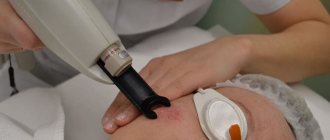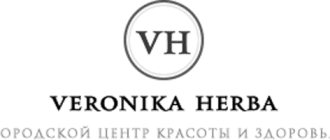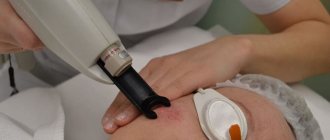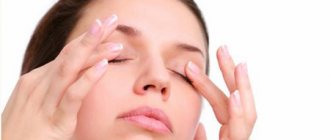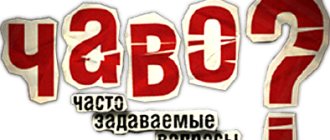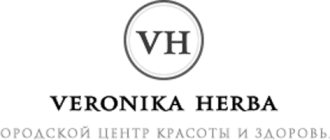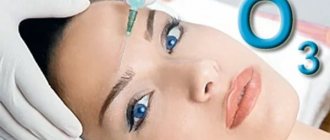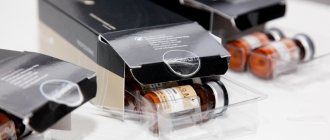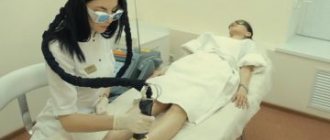Laser treatment of nail fungus is a popular and effective method practiced by many medical centers specializing in the treatment of various infections and lesions of the skin and matrix. The laser copes well with mycosis and its derivatives.
Onychomycosis (mycosis), or, as it is simply called, fungus, is a disease that affects the horny part of the nails or the skin. It is bacterial in nature and is caused by microscopic dermatophyte fungi.
Fungus is not only a cosmetic defect, but also a disease that may indicate the presence of more serious medical problems in the body. It is easy to catch a fungal infection; such a possibility can await you in public swimming pools, saunas, gyms, on the beach or at the household level. If one of the family members has had a fungal infection, then the spores of the pathogen can persist on house shoes, carpets, towels, and in the bathroom.
The fungus is also caused by:
- poor quality and uncomfortable shoes;
- nail extensions;
- failure to comply with personal hygiene rules;
- nail plate injuries.
The risk of onychomycosis increases with age, but even children can contract it from adults.
Nail mycosis is most often caused by three types of fungi:
- yeast mushrooms;
- mold fungi (different types);
- dermatophyte fungi.
The frequency of fungal infections has the following ratio:
| Genus of mushrooms | Leg lesions | Hand damage |
| Mold | 70-80% | 30-40% |
| Yeast | 6-10% | 40-55% |
| Dermatophytes | 10-20% | 10-20% |
| Other | 3% | 2% |
Today, there are several types of treatment for mycosis:
- therapy (taking pills);
- local symptomatic treatment (ointments, gels, varnishes);
- hardware method (influence on mycelium with a reagent);
- laser treatment.
In the last ten years, the method of eliminating mycosis with a laser has become most widespread. Laser radiation penetrates into the deep layers of the nail plate (matrix) or dermis and completely kills the mycelium (mycelium), without injuring the nail or causing any discomfort to the patient.
Laser treatment is a very effective method; the patient notices the first results as the nail grows.
Treatment of nail fungus with laser
A beam of light directed by a laser penetrates the affected area and destroys cells using heat. The surrounding healthy tissue remains intact.
Why is laser preferable to other treatment methods?
- Laser treatment of nail fungus is recommended when other means no longer help.
- Unlike antimycotic ointments and medications, laser gives immediate results and has no side effects.
- The treatment is safe and painless. The laser is equipped with a cooling system that prevents tissue overheating.
Signs of fungal infection
Before starting treatment for the disease, you need to make an accurate diagnosis. Signs of fungal infection vary depending on the type of fungus. This helps the doctor to predict the type of pathogen during a routine dermatological examination:
RUBROPHYTIA:
- All toenails are damaged,
- The fungus affects the entire nail, top, bottom edge, side surfaces,
- Yellowish and white stripes appear in the thickness,
- Hyperkeratosis leads to thickening of the nail,
- The shade of the nails changes and becomes yellowish,
- Brittleness appears, the edge of the nail becomes uneven and sharp.
Epidermophytosis:
- Only the big toe and little toe are affected,
- The fungus is localized on the entire surface of the nail,
- The remaining symptoms are similar to rubrophytia.
NAIL CANDIDOSIS:
- Only the distant edge of the nail plate is damaged,
- The nail becomes, the edge breaks off on the side and the nail has a characteristic beveled cut,
- The color of the nail changes from yellow to brown,
- The skin around the nail is inflamed, painful and may contain purulent discharge.
NAIL MOLD:
- Only in old age
- Nail color black, gray, yellow-green
- Deformation of the nail in the form of a pointed cone,
- Big toes suffer.
NOTE! Knowing the main symptoms of onychomycosis will allow you to recognize the disease at an early stage and consult a doctor in time. With a long course of the disease, serious consequences and complications may arise, requiring long-term therapy and even surgical intervention. Separation of the nail from the nail bed is a common sign of the disease, occurring in advanced cases, making it impossible to wear shoes or play sports.
Advantages of laser treatment for onychomycosis:
- the procedure takes no more than 30 minutes;
- no blood pressure control required;
- laser exposure does not cause pain;
- the laser beam penetrates into the deep layers of the skin and destroys all infected cells;
- laser treatment is not dangerous for allergy sufferers;
- The laser is effective against all types of fungus.
- However, laser removal is not for everyone. This method should be avoided by pregnant women, people with diabetes, cancer or severe chronic diseases.
Contraindications
Like any method, laser intervention has contraindications:
- acute inflammatory processes;
- oncological diseases;
- infections of viral etiology;
- diabetes;
- bearing a child and lactation period;
- streptoderma;
- connective tissue diseases;
- incompatibility with taking other medications;
- disorders of the immune system and use of immunomodulators;
- epilepsy;
- psychoemotional disorders.
Also prohibited for starting treatment are peeling and visiting a solarium. You need to wait a couple of weeks before starting laser treatment for mycosis.
It should also be noted that the laser is not used immediately after surgical removal of internal organs. Treatment can only be carried out after complete recovery.
Result of laser treatment for nail fungus
The effectiveness of the treatment is assessed as the nail grows - this usually takes 6-9 months. To maintain immunity and kill any remaining fungal spores, or if the infection may spread to other fingers, your doctor may prescribe antifungal medications.
After removing the fungus using a laser method, patients have a positive result for at least a year. To prevent the disease from returning, it is enough to follow simple hygiene rules and monitor the condition of your legs and feet. According to research results, onychomycosis disappears forever in 80% of patients.
Causes of the disease and its prevention
The main reason for the appearance of pathogenic fungi on the nails is damage to the skin of the foot or nail plate. In such cases, treatment of the pathology must begin immediately, without delaying it for a long time.
Other factors leading to the occurrence and development of this disease include:
- direct contact with some household items for public use: rubber shoes or rugs, accessories for manicure and pedicure;
- excessive moisture caused by wearing synthetic socks or stockings;
- frequent use of false nails;
- diseases of the endocrine system;
- immunodeficiency diseases.
However, this disease can be prevented if you follow a number of simple rules:
- when visiting swimming pools and saunas, you must have individual rubber shoes with you;
- promptly eliminate calluses and dry feet;
- avoid minor injuries and wounds of the feet and hands;
- use talc and powders for excessive sweating of the feet;
- in case of immunodeficiency, increase immunity;
- change socks or stockings every day.
Such simple actions can be used as preventive measures to prevent onychomycosis. If you strictly follow these rules and strictly follow them, then there will be no need to treat the disease [2][3].
Clinical cases from practice:
Treatment was performed using a 1064 nm Nd:YAG laser (Synchro REPLA:Y, DEKA, Italy). The patients did not undergo any specific treatment prior to the study. Written informed consent was obtained from all patients. The exposure protocol (density - 30 J/cm2, pulse duration - 5 ms and spot - 5 mm) irradiated the entire nail plate, starting from the cuticle, by gradually moving the beam in a spiral without any displacement, as shown in the figure below:
After irradiation of the entire nail plate, there was a one-minute break, and then the laser treatment and breaks were repeated twice, for a total of three treatment cycles. The general course of treatment is four sessions with breaks of one week between each session. Photos were taken before and after each session. After the first session, the color of the nail plate changed in 50% of nails.
The treatment was well tolerated by all patients, and no side effects were observed. Direct mycological histological examination and testing for the presence of fungal cultures demonstrated positive results in all patients after 4 treatment sessions.
conclusions
Taking into account our data, we can conclude that laser therapy for onychomycosis with the Fotona Dynamis SP 1064 nm neodymium laser is a modern method of treating the pathology, demonstrating high efficiency (86% cure). The undoubted advantages of laser therapy compared to standard treatment include a significant reduction in treatment time (only four sessions versus 3 months of therapy), the absence of side effects, ease of implementation, and complete safety for the patient and body tissues during use. The results obtained indicate that this treatment method should be preferred in cases of:
- damage by dermatophyte flora;
- with minor damage (up to 50% of one nail);
- when other methods of standard therapy cannot be used (childhood, women during lactation, patients with severe liver dysfunction, the elderly);
- as a starting protocol for local treatment before prescribing the main course of treatment with systemic drugs.
This technique significantly expands the doctor’s capabilities as a modern and fast method of sterilizing the nail plate. The disadvantages of the technique include the fact that, according to our data, this approach is ineffective as monotherapy in the treatment of onychomycosis caused by mold flora (yeast, aspergillum - no more than 40% of cure) and in combined pathology (nail psoriasis). Although it can serve as a significant addition to systemic antimycotic therapy in these cases. Research in this direction should be continued.
Literature
1. Sergeev Yu. V., Sergeev A. Yu. Onychomycosis. Fungal nail infections. – M.: GEOTAR Medicine, 1998. 2. Kubanova A. A., Potekaev N. S., Potekaev N. N. Guide to practical mycology. – M.: Financial publishing house “Business Express”, 2001. – P. 71–85. 3. Sergeev A. Yu. Systemic therapy of onychomycosis (a manual for doctors). – M., 2000. – 28 p. 4. Skin and venereal diseases: Handbook / Ed. O. L. Ivanova. – M.: Medicine, 1997. – P. 166–167. 5. Sergeev A. Yu., Sergeev Yu. V. Fungal infections. Guide for doctors. – M.: Binom Press LLC, 2003. – P. 93–97. 6. Kozarev J. Novel Laser Therapy in Treatment of Onychomycosis // Journal of the Laser and Health Academy Vol. – 2010, No. 1. 7. Ghannoum MA, Hajjeh RA, Scher R, et al. A large-scale North American study of fungal isolates from nails: The frequency of onychomycosis, fungal distribution and antifungal susceptibility patterns // J Am Acad Dermatol. – 2000; 43:641–648. 8. Gupta AK, Ryder JE, Baran R. The use of topical therapies to treat onychomycosis // Dermatol Clin. – 2003; 21:481–9. 9. Havu V., Brandt D., Heikkila H., Hollmen A., Oksman R., Rantanen T., et al. A double-blind, randomized study comparing itraconazole pulse therapy with continuous dosing for the treatment of toe-nail onychomycosis // Br J Dermatol. – 1997; 136:230–4. 10. Vural E., Winfeld HL, Shingleton AW, Horn TD, Shaf rstein G. The effects of laser irradiation on Trichophyton rubrum growth // Lasers Med Sci. – 2008; 23: 349–353. 11. Meral G., Tasar F., Kocagoz S., et. al. Factors affecting the antibacterial effects of Nd:YAG laser in vivo // Lasers in Surg Med. – 2003; 32(3):197–202. 12. Smijs TG, Schuitmaker HJ Photodynamic inactivation of the dermatophyte Trichophyton rubrum // Photochem Photobiol. – 2003; 77:556–560.
MANIPOLES
Focus
Capable of treating spots of 7 sizes: from 1 to 7 mm, reaching areas with disturbed pigmentation at various depths, including those with tattoos of any kind. The Focus handpiece can be used in several operating modes: Q:switch, quasi-long-pulse (short-pulse mode), long-pulse mode.
HomoGenius
Treats areas of discolored pigmentation and tattoos using a uniform laser beam with universal energy intensity, preventing excessive heating of the area. A square beam with spot sizes of 3x3 mm2 or 5x5mm2 allows you to treat areas without overlap. The HomoGenius handpiece can be used in Q-switch laser mode.
Pixel manipulator (with depth control)
The pixel arm uses fractional beam splitting to create photoacoustic columns in a 7x7 non-ablative pattern without affecting surrounding tissue. Such microtraumas trigger the regeneration process in the affected areas, collagen synthesis is stimulated, and skin turgor is restored.
Collimated handpiece
The collimated handpiece delivers parallel beams of energy to the tissues of the target area with minimal scattering, regardless of the distance to the skin. This allows you to regulate the course of the procedure without maintaining prolonged contact with the skin, also providing better visualization of larger treated areas. A handpiece with a spot size of 8 mm has a high coverage ratio and high processing speed. The collimated handpiece can be used in all pulse delivery modes.
Y-spectrum and R-spectrum handpieces
Additional Spectrum Handpieces expand ALMA-Q's capabilities by offering two additional wavelengths for color tattoo removal. The Y-spectrum handpiece (585 nm) is especially effective at removing blue light, and the R-spectrum handpiece (650 nm) is especially effective at removing green and blue-green colors.
